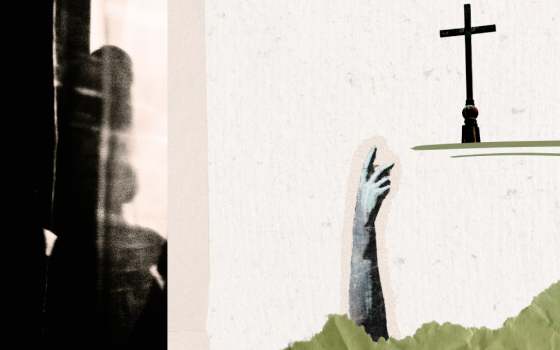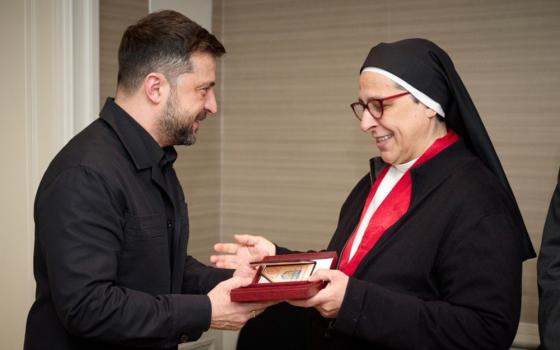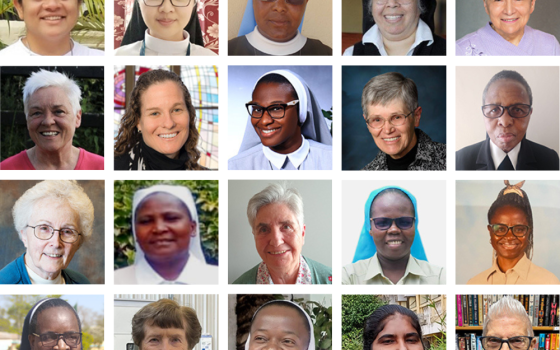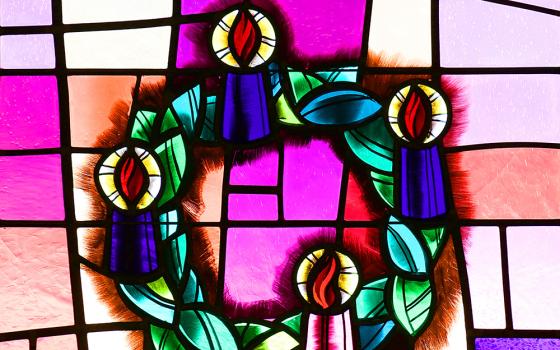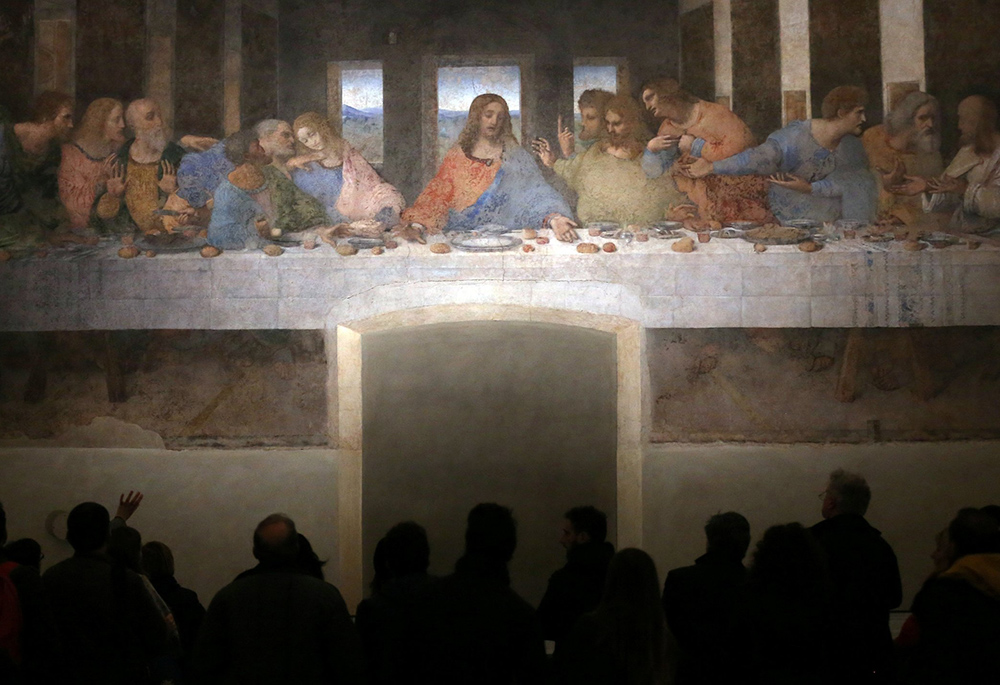
Visitors are pictured in a file photo looking at Leonardo da Vinci's "The Last Supper" on a refectory wall at Santa Maria delle Grazie Church in Milan. (OSV News/Reuters/Stefano Rellandini)
Liturgy is drama, and Holy Week invites us not just to watch but to play our own part.
The rituals of remembrance last an entire week (and a lifetime), drawing us evermore deeply into the mystery of God's love. We begin with the carefully choreographed entry into Jerusalem, then the plots, an anointing, the preparation and celebration of the supper and finally, the Passion that begins in the garden of arrest and is fulfilled in the garden of the empty tomb. This week is one prolonged invitation to communion with and in Christ. Because it's too much to take we can choose any event and discover that it summarizes them all. In this year of synodality and the U.S. eucharistic revival, Jesus' last meal with his disciples seems a fitting choice.
The conversation initiating this story has easily overlooked subtleties. Amid feasting and danger, the disciples ask Jesus, "Where do you want us to prepare for you to eat the Passover?" In reply, Jesus gives them a task that demonstrates that he has already prepared for all that is to come. Following Jesus' instructions, they find the householder who will provide a place for Jesus to eat "with my disciples." In Jesus' eyes, this meal will implicate every participant.
What Jesus does at the table summarizes his entire life and mission. As the host, Jesus blesses the bread as usual. Yet this time he radically refocuses the blessing.
The traditional blessings for bread and wine gave thanks for God's constant care. Holding the bread, the host would say: "Blessed art thou, O Lord our God, King of the universe, who brings forth bread from the earth." In the name of all present, the host then takes the wine saying, "Blessed art thou . . . who creates the fruit of the vine." We see that Jesus did not bless the food and drink, he blessed God for sustaining all life. Rather than sanctifying the elements, this blessing recognized the innate holiness of everything that comes from God. Such a blessing forms the participants into a community united in praise and thanksgiving, and in awareness that all we are and have comes from God who unites Self with us as intimately as the food that sustains us.
Mark, Matthew and Luke each record how Jesus' blessings of the bread and wine at this supper diverged from tradition. In Jesus' culture, the body represented the whole person in relationship with others. Blood was the sacred life force of the body.
When Jesus blessed and broke the bread, he added the audacious statement, "This is my body." By saying that, Jesus identified himself, not as a grateful recipient of God's gifts, but as the gift of God. Taking the wine, Jesus pronounced the traditional blessing and went on to identify himself as the lifeblood of the covenant, God's vulnerable offer to share life with creation — no matter the supposed worthiness or unworthiness of the people.
Advertisement
Now, Mark reiterates what he depicted when the disciples offered to prepare the Passover for Jesus and his reply that they were all to be full participants in it. Jesus blessed, broke and gave them the bread, offering them his very self as the gift of life. Then, when Jesus took the cup, blessed and gave it to them, they all drank of it. Only after they had accepted it, did Jesus explain that it was communion in his life of being poured out for the many. By eating and drinking this bread and wine with him, they took in the gift of God that he was and entered into his own self-giving (Mark 10:28-30). This was their Passover, their full communion with and in him. This suggests that the command, "Do this in memory of me," refers to Jesus' self-giving and that our ritual is meant to draw us into communion with and in him so that we too will become God's gift of life for the many.
What are we to take from this?
Today, we watched the spectators shout, "Hosanna," and soon thereafter cry out, "Crucify him!" The Scriptures and liturgies of Holy Week make it hard to be neutral. They interrogate us, calling us to play our part in the drama of God's great love. We are free to remain spectators, swaying with the wind. We might be trapped among those whose clinging to their plan or power blinds them to God's offer. Or we may choose the strength and freedom offered in the bread that gives us the sustenance necessary to take up the cup of self-giving love.
This week of remembrance leads us to ask ourselves, "Are we prepared to be implicated with Christ?" Do we believe it when we say, "Lord, by your cross and resurrection you have set us free"?

